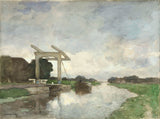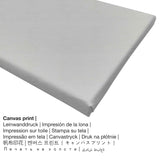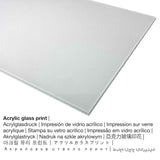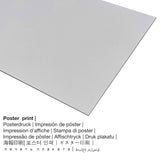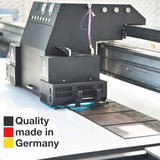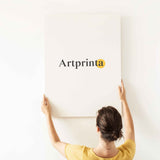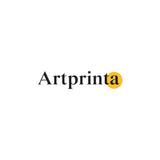Johan Hendrik Weissenbruch, 1890 - Drawbridge na North - ọmarịcha nka
Ụtụ gụnyere. Mbupu gbakọrọ na ndenye ọpụpụ.
Drawbridge at North by Johan Hendrik Weissenbruch dị ka akwụkwọ nka pụrụ iche gị
Nke a gafee 130 ihe nka afọ Drawbridge at North onye na-ese ihe sere ya Johan Hendrik Weissenbruch. E wezụga nke a, ọrụ nka bụ akụkụ nke Rijksmuseum's collection dị na Amsterdam, Netherlands. Anyị na-enwe obi ụtọ ikwu na a artpiece, nke bụ akụkụ nke ngalaba ọha a na-enye ya site n'ikike nke Rijksmuseum.: . N'elu nke ahụ, nhazi a na-abanye odida obodo format ma nwee oke nke 4: 3, nke pụtara na ogologo bụ 33% ogologo karịa obosara. Johan Hendrik Weissenbruch was a male painter, whose style can be attributed primarily to Realism.
Kedu ihe ebipụta nka kacha amasị gị?
Maka mbipụta nka ọ bụla dị mma anyị na-enye nha na ihe dị iche iche. Nhọrọ ndị a dị maka n'otu n'otu:
- Mbipụta iko acrylic (nke nwere ezigbo mkpuchi iko): The acrylic glass print, which is often named as a UV print on plexiglass, will change the artwork into beautiful wall décor. The work of art is printed with the help of state-of-the-art UV print machines. The special effect of this are deep, rich color tones. With an acrylic glass art print contrasts and also color details become more exposed due to the delicate tonal gradation. Our plexiglass protects your custom art print against sunlight and external influences for many years.
- Mbipụta nke aluminom: Aluminium Dibond prints are prints on metal with an outstanding effect of depth, which creates a fashionable impression thanks to a surface structure, which is not reflective. The white & bright parts of the original artpiece shimmer with a silky gloss, however without the glare. Colors are luminous and vivid in the highest definition, the fine details of the print are crisp and clear.
- Kwaaji: The canvas print is a printed cotton canvas mounted on a wood stretcher. Canvas Prints have the advantage of being low in weight, which implies that it is easy to hang your Canvas print without the help of additional wall-mounts. Therefore, canvas prints are suitable for any kind of wall.
- Mbipụta akwụkwọ mmado (akwa akwa akwa): The poster is a printed flat canvas paper with a fine surface structure. Please note, that depending on the absolute size of the poster print we add a white margin of something between 2-6 cm round about the print motif in order to facilitate the framing with your custom frame.
Legal note: We try everythig possible in order to describe our products as clearly as possible and to display them visually on the product detail pages. Please keep in mind that the colors of the printing material, as well as the printing may vary slightly from the image on the device's screen. Depending on the settings of your screen and the condition of the surface, color pigments can unfortunately not be printed as exactly as the digital version depicted here. Since all art prints are processed and printed by hand, there may as well be slight deviations in the size and exact position of the motif.
Nkọwapụta ngwaahịa
| Bipụta ụdị ngwaahịa: | nka nka |
| Mmeputakwa: | dijitalụ mmeputakwa |
| Production usoro: | Mbipụta UV ozugbo |
| Mmalite ngwaahịa: | German mere |
| Ụdị ngwaahịa: | na mmepụta ihe |
| Eji ngwaahịa emebere: | mgbidi gallery, ụlọ ihe ngosi nka |
| Ndozi onyonyo a: | nhazi odida obodo |
| Ụdị anya: | 4: 3 ogologo: obosara |
| Nkọwa nke oke onyonyo a: | ogologo bụ 33% ogologo karịa obosara |
| Nhọrọ dị: | Mpempe akwụkwọ mmado (akwụkwọ kwaaji), mbipụta kanvas, mbipụta ọla (aluminium dibond), mbipụta iko acrylic (nwere ezigbo mkpuchi iko) |
| Kanvas n'elu etiti ihe ndọtị (mbipụta akwa akwa): | 40x30cm - 16x12", 80x60cm - 31x24", 120x90cm - 47x35", 160x120cm - 63x47" |
| Mbipụta iko acrylic (nwere ezigbo mkpuchi iko) nhọrọ nha: | 40x30cm - 16x12", 80x60cm - 31x24", 120x90cm - 47x35" |
| Ụdị akwụkwọ mmado (akwụkwọ kwaaji) dị iche iche: | 40x30cm - 16x12", 80x60cm - 31x24", 120x90cm - 47x35" |
| Nhọrọ nha nha nke aluminom dibond (ihe aluminom): | 40x30cm - 16x12", 80x60cm - 31x24", 120x90cm - 47x35" |
| Nhazi mbipụta nka: | adịghị |
Iberibe ozi nka
| Aha ọrụ nka: | "Drawbridge at North" |
| Nhazi nka nka: | sere |
| Okwu mkpokọta: | nkà nke oge a |
| Narị afọ nka: | 19th narị afọ |
| Emepụtara na: | 1890 |
| Afọ nka: | ihe karịrị 130 afọ |
| Egosiputara na: | Rijksmuseum |
| Ebe ngosi nka: | Amsterdam, Netherlands |
| Ebe nrụọrụ weebụ ihe ngosi nka: | Rijksmuseum |
| Akwụkwọ ikike nka: | ngalaba ọha |
| Site n'aka: | Rijksmuseum |
Ozi omenkà Contextal
| Ihe nkiri: | Johan Hendrik Weissenbruch |
| Gender: | nwoke |
| Obodo onye nka: | Dutch |
| Ọrụ: | onye na-ese ihe |
| Obodo obibi: | mba netherland |
| Nkewa onye nka: | omenkà nke oge a |
| styles: | Ihe ngosi |
© nwebiisinka site na - Artprinta.com (Artprinta)
Ozi nkowa mgbakwunye sitere na webụsaịtị ihe ngosi nka (© - Rijksmuseum - Rijksmuseum)
After 1875, Weissenbruch visited the village of Noorden near Nieuwkoop Lake every summer, to draw studies in the open. Although these large format watercolours seem to be outdoor paintings, they were in fact made at the artist’s studio. In this watercolour, Weissenbruch renders the reflection of the light in the water with especial subtlety. It leaves the viewer with the feeling of being able almost to step into the landscape.

